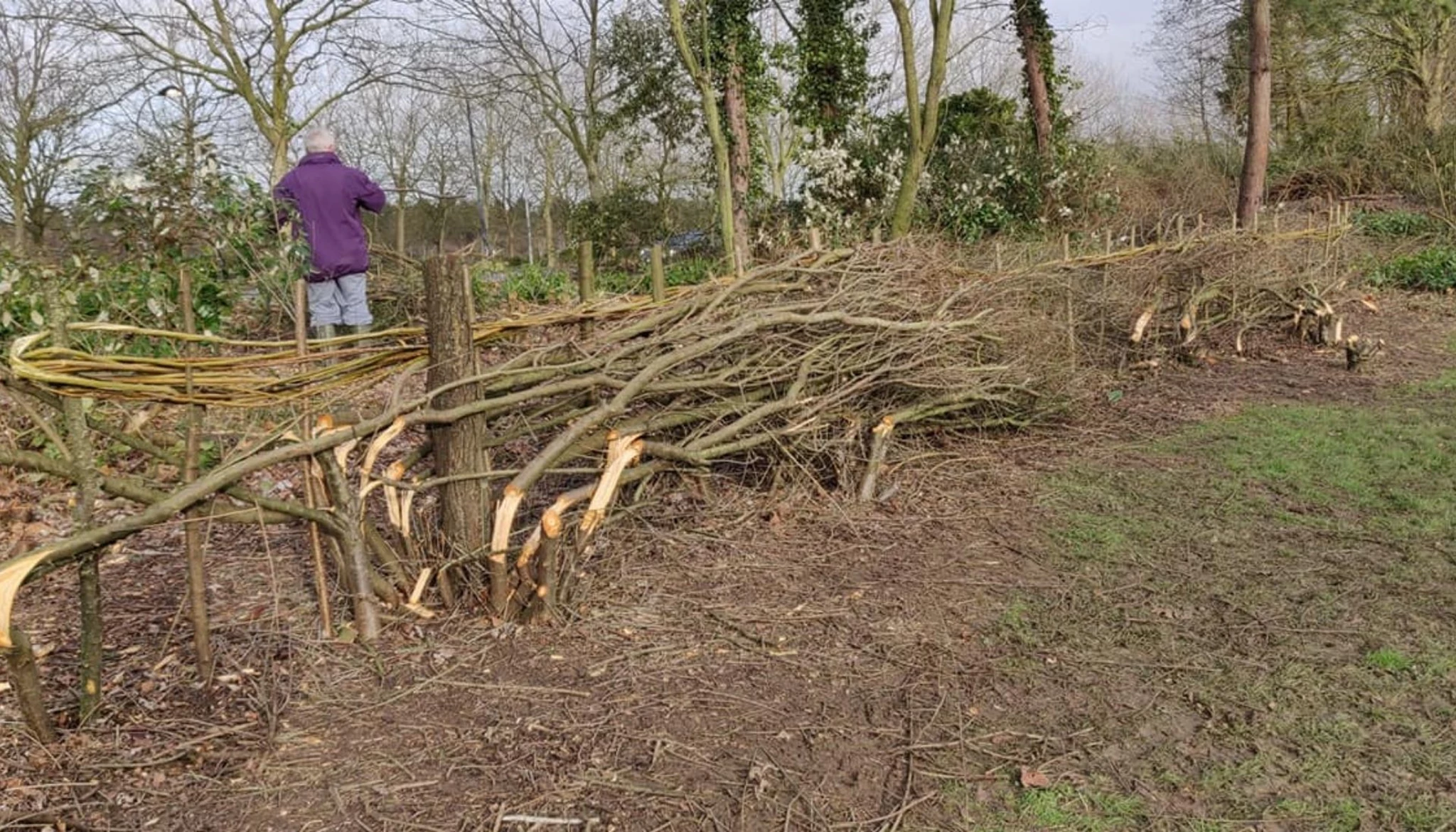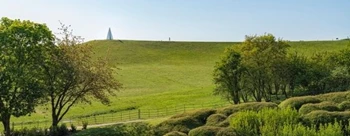Wildlife Blog: Hedgerows

Hedgerows are an important habitat for shelter, food and movement for all sorts of wildlife from field mice, hedgehogs to birds and bats and a variety of invertebrates and fungi along the way. Many of our UK hedgerows have been lost since the end of WW2 as the need for intensified agriculture and food production grew, leading to hedge laying gradually becoming a defunct art.
Predominately composed of Elm, many hedgerows in Milton Keynes succumbed to Dutch Elm disease contributing to their removal. As a priority habitat, here at the Trust we maintain our hedgerows for biodiversity. With the help of our fantastic volunteers, we lay where we can and plant up new hedges using old map records and field boundaries to plug the gaps.
What is hedge laying?
Hedge laying is a traditional countryside management technique used to maintain a hedgerow. A country craft practised for hundreds of years, hedge laying was used as a method of livestock control as you laid the dense brash into the field, preventing the sheep from escaping. Although much of the hedge is trimmed to enable laying the main stem, it is still attached by the bark and sapwood, providing many new shoots to thicken and rejuvenate the hedge at ground level. However, today with more secure fencing available, there is less need for maintenance, leading to hedgerows becoming neglected across the UK.
Why do we carry out hedge laying?
Laying a hedge is the best way to rejuvenate a thinning and gapping hedge. This process keeps it in good health, maintaining best habitat practise and promoting traditional rural skills. Hedgerows are a national priority for conservation and as part of our Biodiversity Habitat Action Plan they provide “green corridors” connecting the parkland and habitats for wildlife.
Other interesting facts...
- There are approximately 10 different regional styles of Hedge laying in the UK.
- Woughton on the Green and Campbell Park are where you can find our most recent volunteering projects examples.
- In Milton Keynes we use the typical Midland style.
- Hazel coppice is used to make the stakes.
- Willow or Hazel is used to make the weaved binders to secure the stakes together along the top of the newly laid hedge.
- Hedgerows are protected by Law.
- There is an Annual Hedge Laying competition run by the National Hedge Laying Society! Head to their website to find out more about this traditional countryside management technique.
*Photo featured above is from one of our volunteer hedge laying tasks, taken by Eva McCann.









